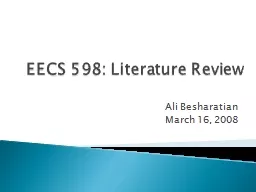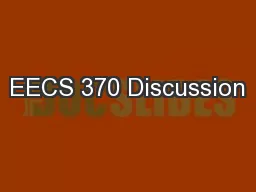PPT-EECS 598: Literature Review
Author : lindy-dunigan | Published Date : 2016-05-01
Ali Besharatian March 16 2008 A HARPSS Polysilicon Vibrating Ring Gyroscope Farrokh Ayazi and Khalil Najafi University of Michigan 2001 First Paper What
Presentation Embed Code
Download Presentation
Download Presentation The PPT/PDF document "EECS 598: Literature Review" is the property of its rightful owner. Permission is granted to download and print the materials on this website for personal, non-commercial use only, and to display it on your personal computer provided you do not modify the materials and that you retain all copyright notices contained in the materials. By downloading content from our website, you accept the terms of this agreement.
EECS 598: Literature Review: Transcript
Download Rules Of Document
"EECS 598: Literature Review"The content belongs to its owner. You may download and print it for personal use, without modification, and keep all copyright notices. By downloading, you agree to these terms.
Related Documents














